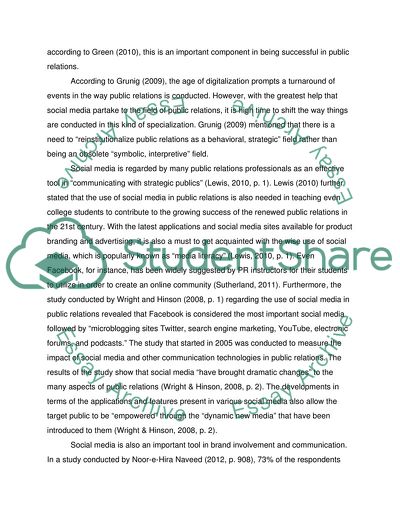Cite this document
(Social Media and Public Relations Literature review Example | Topics and Well Written Essays - 1750 words - 1, n.d.)
Social Media and Public Relations Literature review Example | Topics and Well Written Essays - 1750 words - 1. https://studentshare.org/journalism-communication/1789012-social-media-public-relations
Social Media and Public Relations Literature review Example | Topics and Well Written Essays - 1750 words - 1. https://studentshare.org/journalism-communication/1789012-social-media-public-relations
(Social Media and Public Relations Literature Review Example | Topics and Well Written Essays - 1750 Words - 1)
Social Media and Public Relations Literature Review Example | Topics and Well Written Essays - 1750 Words - 1. https://studentshare.org/journalism-communication/1789012-social-media-public-relations.
Social Media and Public Relations Literature Review Example | Topics and Well Written Essays - 1750 Words - 1. https://studentshare.org/journalism-communication/1789012-social-media-public-relations.
“Social Media and Public Relations Literature Review Example | Topics and Well Written Essays - 1750 Words - 1”. https://studentshare.org/journalism-communication/1789012-social-media-public-relations.


